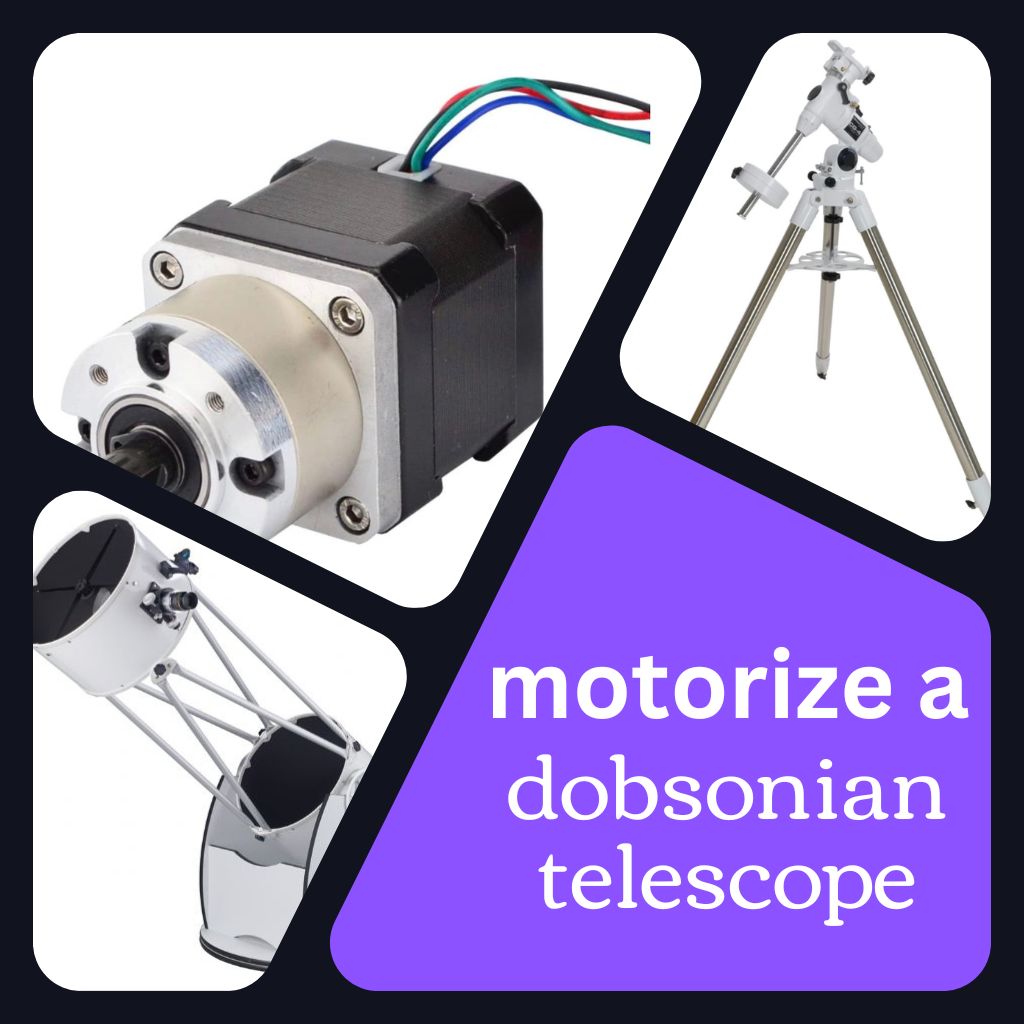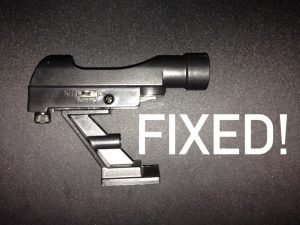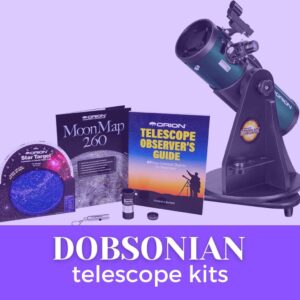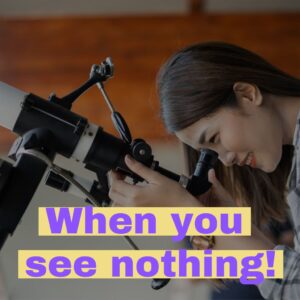This site contains affiliate links to products. I may receive a commission for purchases made through these links.
You can install a motor kit to your Dobsonian telescope to automate field rotation and tracking, making observing stars in the night sky easier. This can be accomplished in a few easy steps. The most critical step is choosing the right motor and mount for your telescope to ensure it operates smoothly.
Your motor kit should include a field-rotating motor, which will move the telescope in an up-down and left-right direction over several hours. You will also need a worm gear to control the field rotation and mounts to secure the motor.
These components will allow you to motorize your Dobsonian telescope and enjoy the wonders of astronomy with ease. It’s time to take your stargazing experience to the next level!
In this article, we will discuss why you need to motorize your Dobsonian telescope, the methods of motorizing a Dobsonian telescope, and the steps to do so. Let’s get started!
Can a Dobsonian telescope be motorized?
You can automate field rotation and tracking for your Dobsonian telescope with the right motor kit. This will make it easier for you to observe stars and other heavenly bodies in the night sky without manually adjusting your telescope.
Motorizing your Dobsonian telescope is not rocket science but requires some technical know-how. You should know all the components and parts of your telescope to ensure that you install the motor kit correctly.
The Sky-Watcher Flextube 200 Dobsonian 8-inch Collapsible Large Aperture Telescope is an ideal example of a telescope that you can motorize. Its professional-grade components make it an excellent choice for astronomers looking to motorize their Dobsonian for a smooth stargazing experience.
3 Methods for motorizing a Dobsonian telescope
There are three main methods for motorizing your Dobsonian telescope. They make it easier to motorize your Dobsonian telescope without compromising its performance.
1. Switching to an equatorial mount
Converting a Dobsonian telescope into an equatorial mount is a common motorizing technique. Motorizing an equatorial mount is much easier than motorizing an alt-azimuth mount, as the motor only needs to rotate around one axis.
The downfall to motorizing an equatorial mount is that you may have a heavy and bulky motorized Dobsonian telescope. This can make transporting and operating the motorized Dobsonian telescope outdoors difficult.
Our recommended equatorial mount is the Celestron CG-4 German Equatorial Mount and Tripod. This mount is sure to provide a smooth and reliable motorized Dobsonian telescope experience.
2. Installing an equatorial table
An equatorial table is a motorized platform that supports the telescope and allows it to rotate around its polar axis. This motorized platform allows you to motorize your Dobsonian telescope without attaching a motor directly to the telescope.
The only downside is that equatorial tables are bulky and may take up a lot of space.
Additionally, motorizing an equatorial table requires more technical knowledge. The motor must be synchronized with the telescope’s motor to ensure it moves in the right direction.
3. Computerizing an altazimuth mount
The last and most recommended method for motorizing a Dobsonian telescope is to computerize the altazimuth mount. This requires you to attach a motor to the telescope’s optical tube and azimuth axis.
The motor is then connected to a computer to control the telescope’s movement.
This method is the most efficient, as it allows you to control the telescope’s up-down and left-right movements with the help of a computer.
You can also easily add tracking and field rotation to your telescope, making observing stars in the night sky easier.
Our recommended motorized Dobsonian telescope mount is the Orion 52587 VersaGo E-Series Altazimuth Mount Head with Tripod. It’s among the latest inventions of Altazimuth mounts with a tripod for better stability and smooth motorization.
You may also like: 10 Advantages of Computer-Controlled Mounts for Telescopes
10 steps for motorizing a Dobsonian telescope
Motorizing a Dobsonian telescope can be daunting, but it is easier than you think. If you have crafting skills and some technical knowledge, you can easily motorize your telescope in a few steps:
1. Choose the right motor kit for your telescope
You need to know the weight of your telescope, the mount type, and how much power you need for smooth movement. Your motor kit should be compatible with your telescope to ensure the best performance.
Motor kits vary, depending on the size and type of your telescope. Power supply and gear ratio differ, so you need to know what you are looking for before purchasing.
For this procedure, you will need two motors; a stepper and an azimuth motor. They mainly come in a single package.
Reading reviews and asking questions before buying a motor kit is a good idea. You should also research the motor kit’s gear ratio and power requirements to ensure it suits your telescope.
2. Gather all the necessary tools and materials for installation
Once you have chosen the right motor kit for your Dobsonian telescope, it’s time to gather the tools and materials you will need for installation. They include a screwdriver, electric drill, screws and bolts, a power source (battery or AC), and a controller.
Depending on the motor kit you purchased, you may also need a lubricant for the gearbox. Double-check that you have all of these materials before starting the installation process.
If you need help determining which tools and materials you need, refer to the instructions provided with your motor kit. However, most kits have a detailed guide listing all the necessary items.
3. Remove the telescope tube from the rocker box
After you have gathered all the necessary tools and materials, it’s time to remove the telescope tube from the rocker box. In most cases, you can just unscrew the bolts and remove the tube from its mount.
Be sure to place it in a safe spot where it won’t be damaged during installation. You may also want to take a few pictures of the telescope before you start so that you can refer to them later.
The tube should be free of obstructions so you can properly install the motor kit. How you mount the motor to the tube will determine the effectiveness of your motorized telescope.
4. Install the motor kit on the base of the telescope
Once you remove the telescope tube, you can start installing the motor kit. Your Dobsonian telescope can already rotate on its base, but the motor kit will allow you to use a controller to track celestial objects.
The base of a Dobsonian telescope mainly consists of two circular parts, with one on top of the other. There is some tiny space separating the two since only the top part rotates. That’s where you will install the azimuth motor kit.
You can use a small chisel to create a groove on the edge of the top part for the motor kit’s base plate. Ensure you don’t damage any other telescope parts when carving out the groove.
Use the electric drill to drill a few holes in the top part of the baseplate, then mount the azimuth motor kit. Ensure the motor is firmly attached to the baseplate and the rotating part rests on the bottom of the base plate.
The azimuth motor allows the base of your telescope to move in a circular motion, making it easier to track celestial objects. It will have an outlet to connect the power supply and controller.
5. Install the motor kit on the telescope tube
The next step is to attach the stepper motor to the telescope tube for elevation control. You should mount the motor near the rotating part that allows you to move the telescope tube up and down manually.
You can use a screwdriver to attach the motor since drilling holes in the tube may cause damage. Securely fasten the stepper motor to the tube and ensure that it is firmly attached.
The Stepperonline 5:1 Planetary Gearbox Nema 17 Stepper Motor 1.68A is a great choice for this purpose. It features a 40 mm motor length, 1.68A current, and a 5:1 reduction ratio.
6. Connect the power
The stepper motor mainly uses a pulley system to move the telescope tube up and down. Therefore, you will have to attach a grooved wheel to the rotating left-side bearing of the telescope tube.
Use a belt to connect the motor and wheel so that when the motor rotates, the wheel will move together with the telescope tube. You can also lubricate the motor and wheel to reduce friction and ensure smooth operation.
The Houkr 3D Printer Timing Belt 2GT-6 Closed Loop Rubber Belt is an ideal set of six timing belts of different lengths that you can use for your motor kit.
7. Connect the motor kit to the power source
The wiring from the stepper and azimuth motor kits should already be connected to a circuit board. Once you install the motor kits, you can connect the circuit board to a power source, such as a 12V battery and a controller.
We recommend the Tenergy NiMH Battery Pack 12V 2000mAh High Capacity Rechargeable Battery for powering your motor kit. It is a high-performance, reliable 12V battery with an advanced safety protection system.
The ports on the circuit board should be clearly labeled, or your kit should have a manual with wiring diagrams for reference. Connect the motor kit to a power source and the controller.
Be sure to follow all safety precautions when connecting the motor kit to a power source, as electricity can be hazardous. You should also use a motorized mount in a telescope designed to support your telescope’s weight and motor.
8. Test the motorized system and make any necessary adjustments
Once the motorized system is connected to a power source, you can test its functionality. You can use the controller to move the motor in different directions to ensure it works properly.
If the motor is not moving smoothly, you may need to adjust the belt tension or motor rotation speed. If you’re having trouble, you can refer to the manual for troubleshooting tips.
9. Reinstall the telescope tube onto the rocker box
Once your motor kit is installed, reinstall the rocker box onto the Dobsonian telescope. Make sure that all the motor hardware and wiring are safely tucked away so that it doesn’t interfere with the motion of the motorized mount.
You can also add a motorized focusing controller to your motor kit if you want precise and automated control over the focus of your telescope. After that, all you have to do is enjoy motorizing your Dobsonian telescope!
10. Align the motorized system with the celestial object you want to observe
Once you motorize your Dobsonian telescope, you can easily align the motorized mount with any celestial object you want to observe. It does not matter whether you’re observing the Moon, a star cluster, or a distant galaxy.
Simply use the controller to move the motorized mount in the proper direction until the telescope is pointing towards your desired celestial object. If you have a focusing controller, you can also make precise adjustments to the telescope’s focus.
Now that your motorized system is aligned, simply sit back and enjoy the motorized Dobsonian telescope. It’s a great way to explore the night sky, and with motorization, your Dobsonian telescope can take you on an exciting journey.
The Alstar AccuFocus Electronic Telescope Focuser makes it easy to focus your Dobsonian telescope precisely. It’s an ideal accessory for enhancing your motorized Dobsonian telescope experience.
Reasons to motorize a Dobsonian telescope
A Dobsonian telescope works well for stargazing, but it can be difficult to adjust manually. Motorizing your Dobsonian telescope will give you a smoother, more accurate field rotation and tracking experience.
Let us look at some reasons why you should motorize your Dobsonian telescope:
Smoother tracking
The Dobsonian telescope is designed to move slowly and smoothly in an up-down and left-right direction. It needs to move at a consistent pace to ensure that it tracks the stars accurately.
With a field-rotating motor, you can easily achieve this accuracy and precision. The motor will move the telescope consistently, making field rotation and tracking smoother.
The motor reduces the effort you need to adjust the field rotation and tracking of your Dobsonian telescope. Eliminating the need for manual adjustments allows you to observe stars for longer periods.
Easier object location
Installing a motor kit allows you to keep up with the movement of astronomical objects, making it easier to locate them as they move across the sky. The motor will move your telescope consistently, allowing you to focus on locating various objects.
Most objects in the night sky move clockwise and anticlockwise, making it difficult to locate them manually. Clouds or other objects in the sky can obstruct your field of view by blocking the stars or constellations you are trying to observe.
Some objects, like comets, move across the sky quickly. They can move out of sight in a matter of minutes, making it difficult to locate them without the help of a motor. The motor kit lets you keep track of the movement and observe objects without hassle.
Improved observing experience
Motorizing your Dobsonian telescope will make your stargazing experience even more enjoyable. You can set up the motor kit once and forget about it, leaving you free to observe stars and other objects in the night sky.
You will have more time to enjoy astronomy’s wonders without worrying about field rotation and tracking. With a motor kit, you can sit back and relax as you use the motor to control the telescope’s movements.
Dobsonian telescopes use an altazimuth mount with two axes, moving up and down or side to side. Motorizing your Dobsonian telescope requires installing worm gear to these two axes for smooth movement.
Better astrophotography
If you enjoy taking pictures of the night sky for your photography portfolio, consider motorizing your telescope. Installing the motor kit will give you smooth field rotation and tracking for astrophotography, allowing you to capture stunning night sky images.
With a motorized Dobsonian telescope, you can set up your camera and capture amazing shots of stars and astronomical objects. The motor will keep your telescope in the same position or allow you to take multiple long exposures without movement.
A smoother and more accurate field rotation and tracking experience are key to taking perfect astrophotography shots. Installing a motor kit on your telescope will allow you to achieve this accuracy and precision easily.
If you have a smartphone with a quality camera, get the Celestron – NexYZ – 3–Axis Universal Smartphone Adapter for Telescope and enhance your astrophotography experience. It allows you to connect your smartphone directly to the telescope and easily take pictures of the night sky.
Increased precision
If you struggle with pinpointing the exact location of stars and other astronomical objects, a motorized kit guarantees increased precision in field rotation and tracking. But you must know what you are looking for and how to adjust the motor to get the best view.
The worm gear will provide smooth movements, so you can easily focus on locating and observing stars. The motor can also keep the telescope in the same position for long periods, allowing you to enjoy a more detailed night sky view.
Vibration often ruins views in manual telescopes, but that won’t be an issue with a motorized Dobsonian telescope. It’s highly unlikely that you will encounter any vibration or movements when adjusting the motor settings.
Accessibility
Installing a motor kit on your Dobsonian telescope will make it more accessible for a beginner or amateur astronomer. If you struggle to track stars or celestial objects, the motor will make it easier to observe them.
The accuracy and precision of field rotation and tracking can be a game-changer for anyone who wants to get into astronomy. A motorized Dobsonian telescope can easily track stars and other objects, making it easier to observe them.
Whether you are an experienced astronomer or just getting into the hobby, a motorized Dobsonian telescope can make your stargazing experience even more enjoyable. The gear ratio will ensure smooth movement, while the motorized mount makes tracking stars and other objects in the night sky easier.
Takeaway: Motorize your Dobsonian telescope and enjoy exploring the night sky in a whole new way
Motorizing your Dobsonian telescope is a great way to bring the exploration of the night sky to another level. With motorization, you can easily align your telescope with any celestial object and precisely adjust the focus.
The process of motorizing your Dobsonian telescope isn’t complicated, and you can do it yourself with basic tools and supplies. However, you need technical skills and knowledge to install the motor kit correctly.
So, if you’re up for the challenge and ready to take your stargazing experience to the next level, motorize your Dobsonian telescope today! You won’t regret it.
You may also like:
- How to Build a Dobsonian Telescope? Step-by-Step Guide for Beginners
- 10 Reasons Why Dobsonian Telescopes Are Cheaper
- 5 Advantages and 5 Disadvantages of Dobsonian Telescopes
- Top 3 Sky-Watcher 10-inch Dobsonian Telescopes
- 10 Best Dobsonian Telescopes (Ranked!)
- How To Connect Telescope To Computer
- How to Use a Dobsonian Telescope (Beginners Guide)











